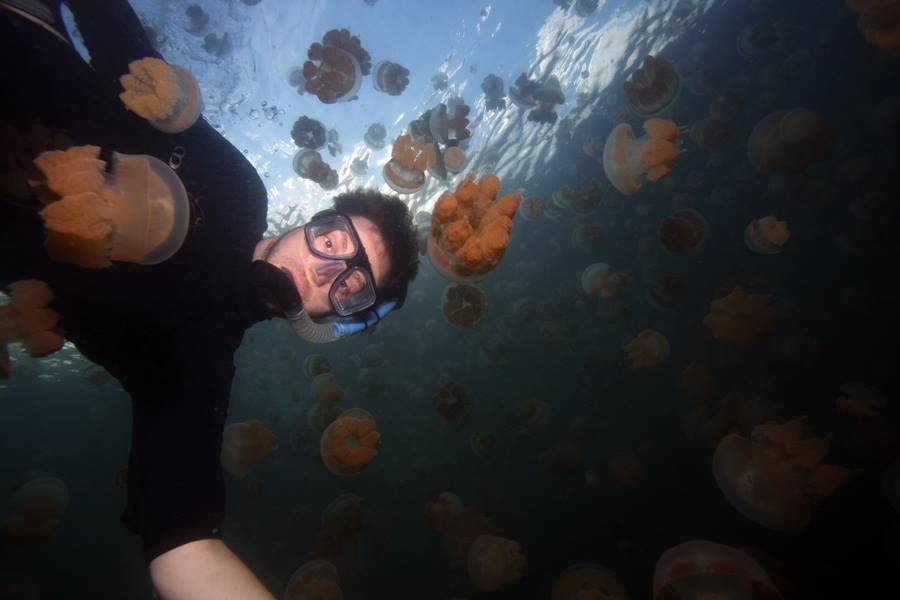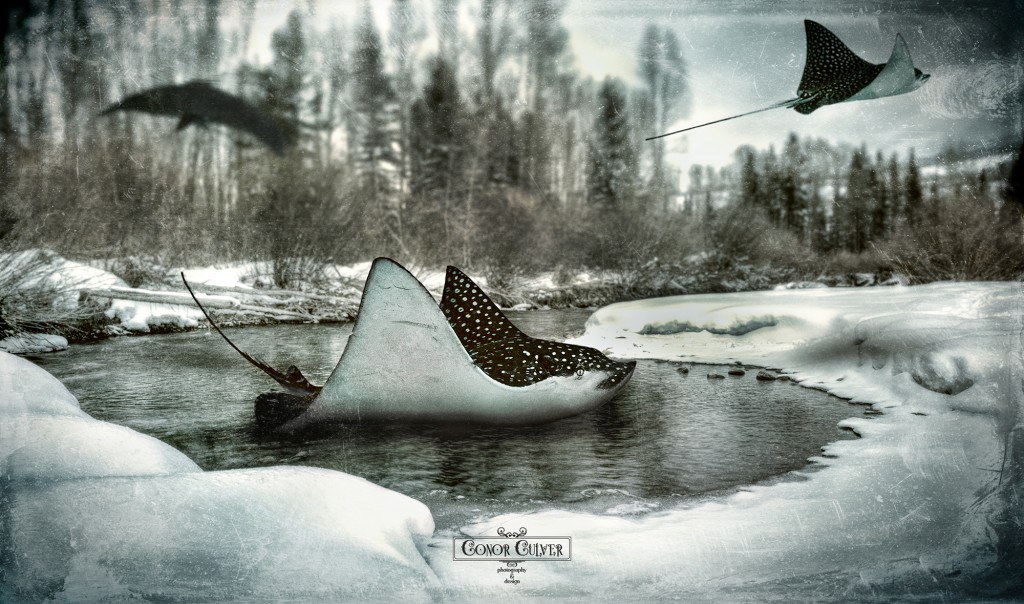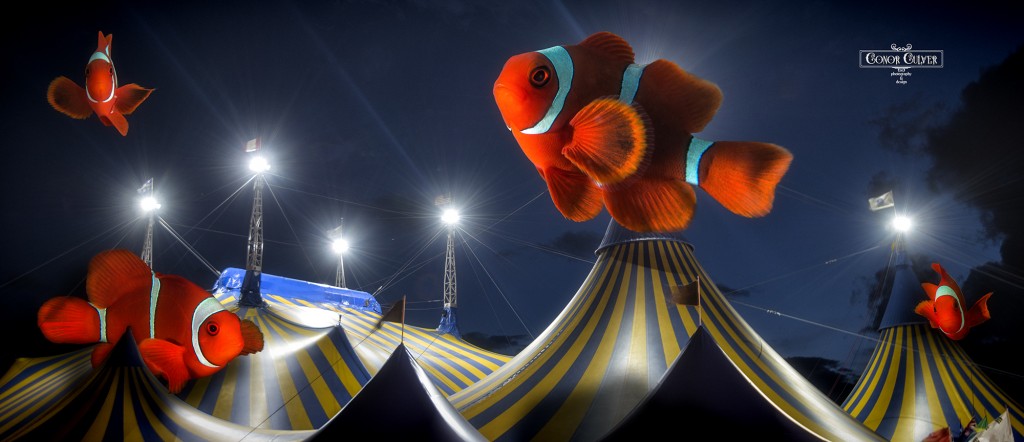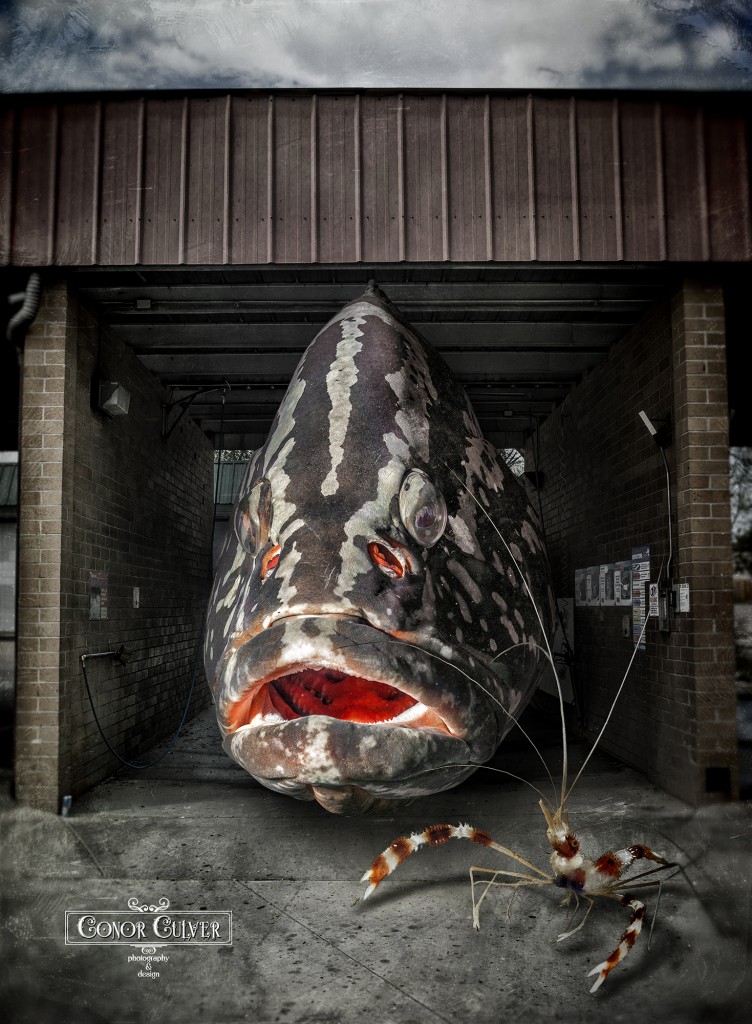Photo / Video News & Reviews
Scubaverse Underwater Photographer Interview: Conor Culver
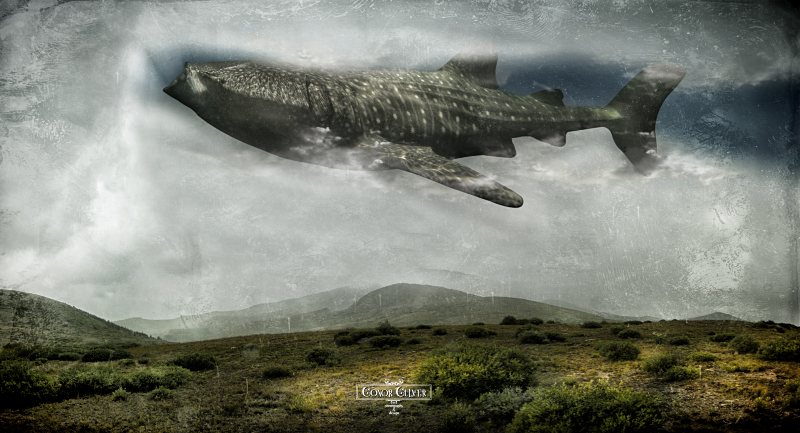
In a brand new ongoing series, Scubaverse.com’s Underwater Photography Editors Nick and Caroline Robertson-Brown talk to underwater photographers from around the world that they admire.
The first interview is with US-based underwater photographer Conor Culver.
I am Conor Culver from Golden, Colorado. I have a BFA with a duel emphasis in Photography and Digital Design from the University of Colorado Denver. My diving career started when I was 12 years old and has taken over my life since then.
My awards include: 2nd in 2014’s Our World Underwater in the Conceptual/Fashion Category, 3rd Place in 2015 Scuba Diving Magazine Photo Contest, 1st and 3rd place in Liquid Capture: Masters of Underwater Photography, 3rd place in 2014 Underwaterphotography.com’s contest (Creative/Manipulated), and 1st in 2015 Underwaterphotography.com’s annual contest (Creative/Manipulated).
N/C: How did your underwater photography start?
CC: I started diving 18 years ago and began shooting underwater 14 years ago. The first time I ever shot underwater, I was 16 years old diving the island of Dominica. It wasn’t until I attended the University of Colorado Denver years later that I began to explore surreal art and photography. At first, I just created any surreal image that came to mind, but I didn’t start manipulating underwater images till my junior year. I began my thesis my senior year and that is when the foundations of my body of work titled “Underwater Surrealism” began. I wanted to say something unique about the animals in each image, but as a body of work I wanted the meaning to bring awareness to the reefs and oceans. I’ve found it interesting that ocean disasters almost always are not widely known or publicized, but disasters on land are always front-page news. Many people, even today, do not know about the lionfish invasion in the Atlantic, but I’ll always remember the cover of the news paper being a heard of elk that was struck by lightning here in Colorado. Both are horrible occurrences, but only the land disasters make the news. So with this work, if I bring these animals above water and into scenes on land, are they now just as important? My work is created to bring awareness to these fish, animals and reefs.
N/C: What is your favourite u/w camera equipment (past & present) & Why?
CC: I shoot with a Nikon D800E with and Ikelite housing and have 2 DS-160 Sunstrobes. For lenses, I shoot mostly with a 60mm macro because I can usually get the entire animal in the shot. For really small animals I use my 105mm macro and for wide-angle for the larger animals I use a 16-35mm. I’ve always loved Nikon and their lenses; my first DSLR was a Nikon D80, so I’ve always been shooting Nikon. My first underwater camera was a Sea & Sea MX-10 35mm camera. Loved that camera and being able to change between wide angle and macro underwater. The major downfall was being limited to only a few shots and not knowing if they came out immediately. Also since all my work is digitally created in Photoshop, it makes it easier sticking with digital and moving away from film.
N/C: Tell us how you go about creating the images in your Underwater Surrealism series. Do you plan the final image and then go and take the underwater and above water images? Or are you inspired by images you have already taken whilst diving?
CC: Creating my images can go either way. Sometimes my ideas are imagined before I go on my trips and other ideas come after a dive or even when I’m back at home. A good example of an image planned ahead of time was Clownfish Circus where I placed clownfish swimming around circus tents. I developed that idea way before I got the images of clownfish. I even shot the circus tents months before I left for my next trip.
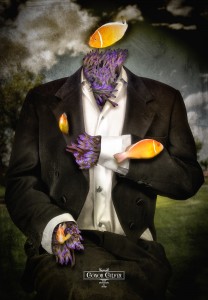 Most of my ideas for images are developed afterward. I don’t always know what I’m going to find and how that animal or fish will be positioned underwater. Most of my images and ideas are created afterwards when I have the shot of that animal. Sometimes immediately after the dive, I begin to think of the scenes to put the animals in. When the idea is envisioned, I search for background shots here in CO or wait till I can get them when I travel. I always have my camera around me.
Most of my ideas for images are developed afterward. I don’t always know what I’m going to find and how that animal or fish will be positioned underwater. Most of my images and ideas are created afterwards when I have the shot of that animal. Sometimes immediately after the dive, I begin to think of the scenes to put the animals in. When the idea is envisioned, I search for background shots here in CO or wait till I can get them when I travel. I always have my camera around me.
Then in Photoshop, I clip the animals out and put them into the scenes on land, mask them, create the shadows, adjust the colors and lighting and finally add texture over the entire image. Texture helps trick the eye into believing the image. Many of the edits are just experimenting with what works and what doesn’t and just messing around letting things happen. That’s the surrealist in me coming out; most of my images never completely turn out exactly how I envisioned them and that is probably my favourite part.
N/C: What, or who, has been your single biggest inspiration for your underwater photography?
CC: My absolute biggest inspiration in photography is Jerry Uelsmann. When I saw his work in Introduction to Photography in college I knew what I wanted to do as a photographer. I wanted to create images that challenge your sense of reality. It wasn’t just him – the early surrealists Rene Magritte, Salvador Dali, Man Ray, Max Ernst, and Joan Miró played a big role and photographers Maggie Taylor, Robert and Shana Parke Harrison, and Ben Goossens are big inspirations as well. My parents for helping me along the way and the professors at UCD who helped develop my vision and meaning for my work are all responsible for the work I create today.
N/C: If you could photograph any one thing/place what or where would that be?
CC: My number one place I always wanted to go was Indonesia, but I just travelled there in November and was blown away. If I could photograph any one thing, it would be the Great Hammerhead Shark. With all the 18 years of diving, I’ve never seen a hammerhead and they have always been my top creature to see. I was trying to plan a trip to Bimini this year, but it didn’t work out. So now I’ll try for next year!
You can view Conor’s work at www.conorculver.com.
Facebook: www.facebook.com/conorculverphotographyanddesign
Twitter: @Conor_Culver
Blogs
Diver Discovering Whale Skeletons Beneath Ice Judged World’s Best Underwater Photograph
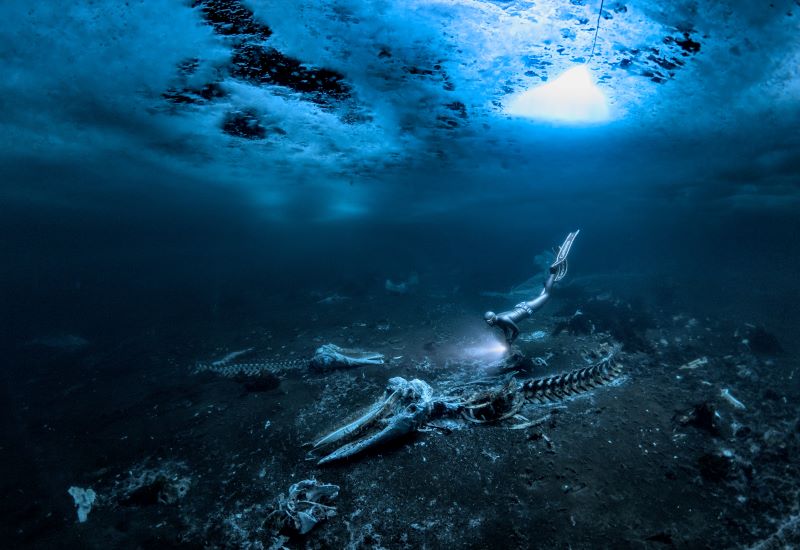
An emotive photograph showing a freediver examining the aftermath of whaling sees
Alex Dawson from Sweden named Underwater Photographer of the Year 2024. Dawson’s
photograph ‘Whale Bones’ triumphed over 6500 underwater pictures entered by underwater
photographers from around the world.
“Whale Bones was photographed in the toughest conditions,” explains chair of judging
panel Alex Mustard, “as a breath-hold diver descends below the Greenland ice sheet to bear
witness to the carcasses. The composition invites us to consider our impact on the great
creatures of this planet. Since the rise of humans, wild animals have declined by 85%. Today,
just 4% of mammals are wildlife, the remaining 96% are humans and our livestock. Our way
needs to change to find a balance with nature.”
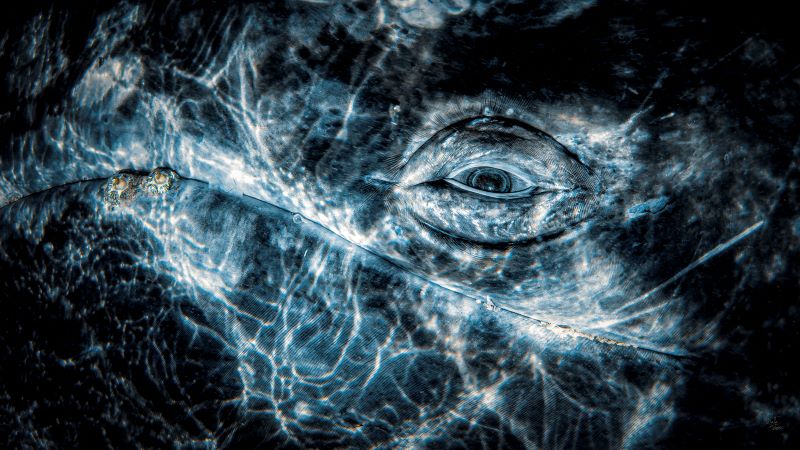
Photo: Rafael
Fernandez Caballero
Whales dominated the winning pictures this year with Spanish photographer Rafael
Fernandez Caballero winning two categories with his revealing photos of these ocean giants:
a close up of a grey whale’s eye and an action shot of a Bryde’s whale engulfing an entire bait
ball, both taken in Magdalena Bay, Baja California, Mexico. Fernandez Caballero took ‘Grey
Whale Connection’ while drifting in a small boat, holding his camera over the side in the water
to photograph the curious whale. ‘The End Of A Baitball’ required Fernandez Caballero to dive
down and be in exactly the right place at the moment the whale lunged. “The photo shows
the high speed attack,” he said, “with the whale engulfing hundreds of kilograms of sardines
in one bite — simply unforgettable to see predation on such a scale.”
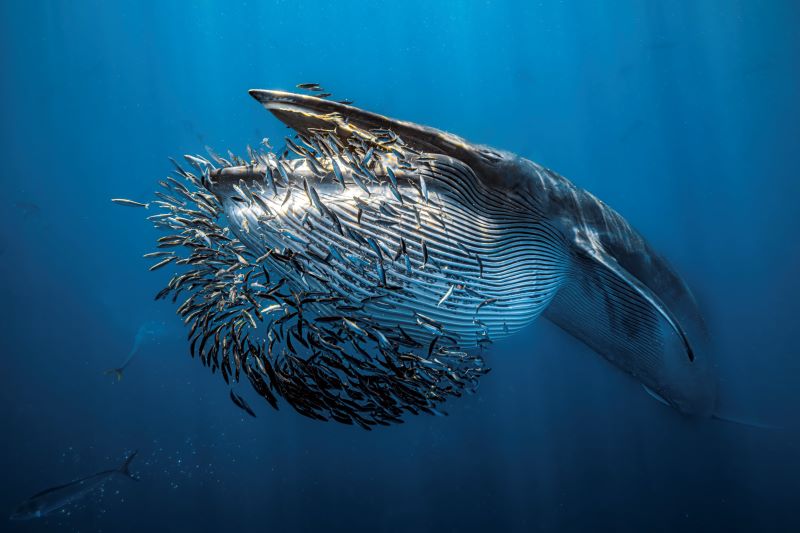
Photo: Rafael
Fernandez Caballero
Lisa Stengel from the United States was named Up & Coming Underwater Photographer of the Year 2024 for her image of a mahi-mahi catching a sardine, in Mexico. Stengel used both a very fast shutter speed and her hearing to catch the moment. “If you listen there’s an enormous amount of sound in the ocean,” she explained. “The action was too fast to see, so I honed in on the sound of the attacks with my camera to capture this special moment.”
“It is such an exciting time in underwater photography because photographers are capturing such amazing new images, by visiting new locations and using the latest cameras,”
commented judge Alex Mustard. “Until this year I’d hardly ever see a photo of a mahi mahi,
now Lisa has photographed one hunting, action that plays out in the blink of an eye.”
The Underwater Photographer of the Year contest is based in the UK, and Jenny Stock,
was named as British Underwater Photographer of the Year 2024 for her image “Star
Attraction”, which finds beauty in species of British wildlife that are often overlooked.
Exploring the west coast of Scotland, Stock explained “in the dark green depths my torch
picked out the vivid colours of a living carpet of thousands of brittle stars, each with a
different pattern. I was happily snapping away, when I spotted this purple sea urchin and I
got really excited.”
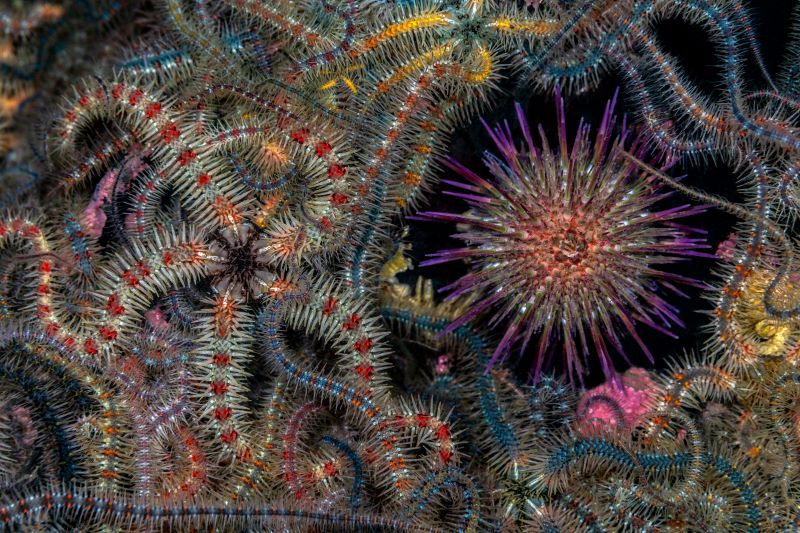
Photo: Jenny Stock
In the same contest, Portuguese photographer, Nuno Sá, was named ‘Save Our Seas
Foundation’ Marine Conservation Photographer of the Year 2024, with his photo ‘Saving
Goliath’, taken in Portugal. Sá’s photo shows beachgoers trying to save a stranded sperm
whale. The picture gives us hope that people do care and want to help the oceans, but also
warns us that bigger changes are needed. “The whale had been struck by a ship and its fate
was sealed,” explains Sá. “An estimated 20,000 whales are killed every year, and many more
injured, after being struck by ships-and few people even realise that it happens.”
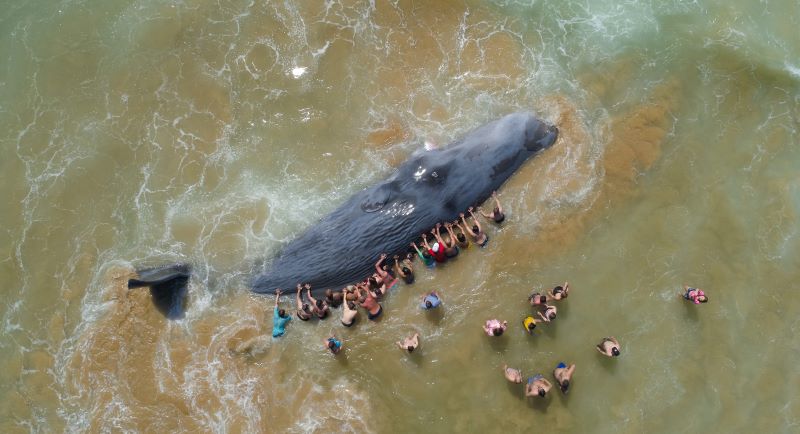
Photo: Nuno Sá
More winning images can be found at www.underwaterphotographeroftheyear.com.
About Underwater Photographer of the Year
Underwater Photographer of the Year is an annual competition, based in the UK, that celebrates photography beneath the surface of the ocean, lakes, rivers and even swimming pools, and attracts entries from all around the world. The contest has 13 categories, testing photographers with themes such as Macro, Wide Angle, Behaviour and Wreck photography, as well as four categories for photos taken specifically in British waters. The winners were announced in an award ceremony in Mayfair, London, hosted by The Crown Estate. This year’s UPY judges were experienced underwater photographers Peter Rowlands, Tobias Friedrich and Dr Alexander Mustard MBE.
Header image: Underwater Photographer of the Year 2024 winner Alex Dawson
News
World’s Best Underwater Photographers Unveil Breathtaking Images at World Shootout 2023
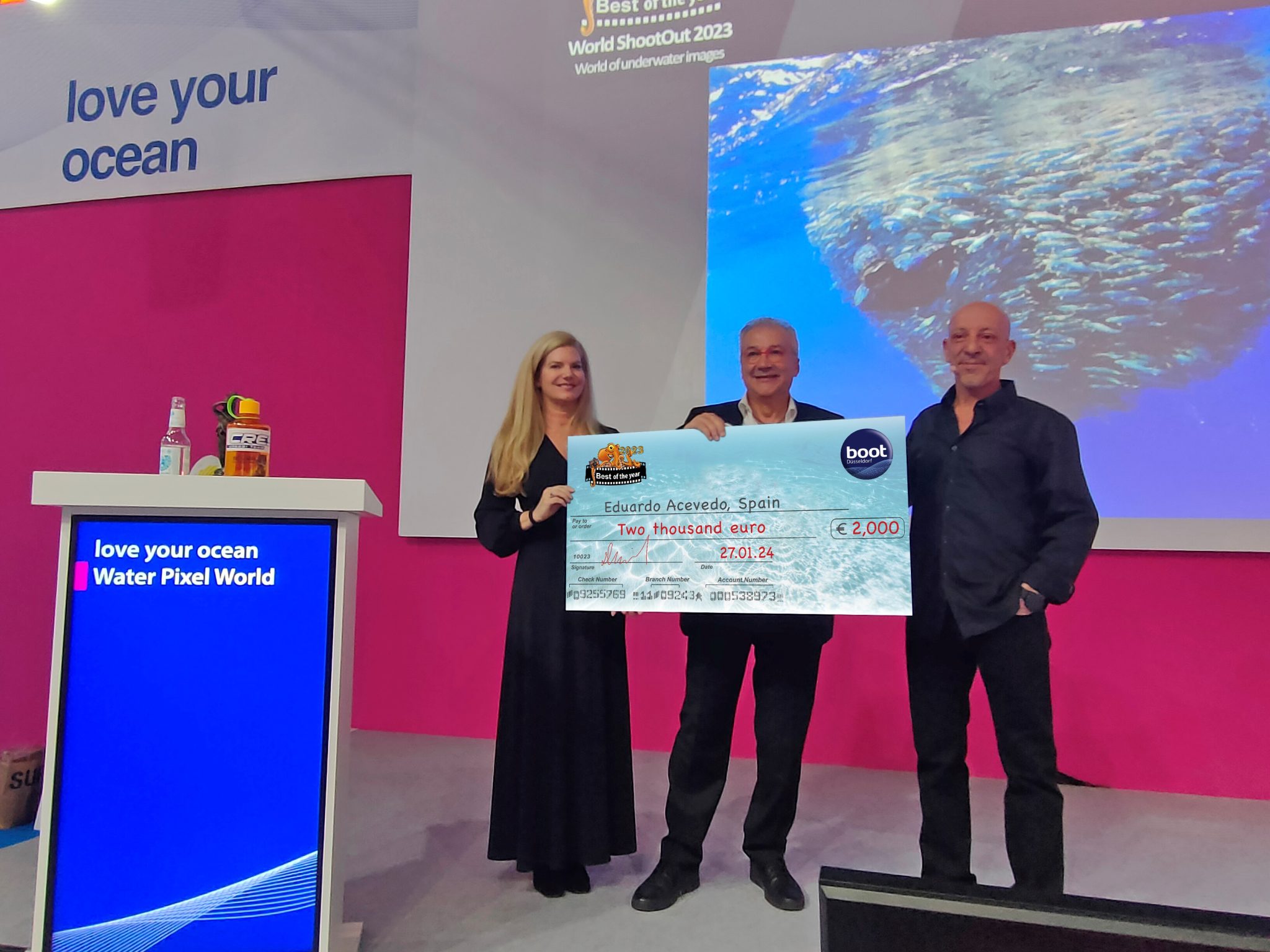
The winners of the prestigious World Shootout 2023 underwater photography competition were announced at this year’s BOOT Show, captivating audiences at the world’s largest diving and water sports exhibition in Dusseldorf, Germany. Hundreds of photographers from 54 countries competed across nine categories, pushing the boundaries of creativity and technical skill.
Grand Prize Winners
- Picture of the Year: Spanish photographer Eduardo Acevedo “secured” the top Honor with the prestigious prize the “boot Dusseldorf Director’s Prize, earning an Andromeda statuette and a €2,000 cash prize.
- Best 5 Images Portfolio: Luc Rooman from Belgium triumphed in this category, winning a dream 4-week diving trip for two to Papua New Guinea, valued at $18,900.
- Amateur Photographer: Alexandra Ceurvorst from the USA impressed the judges with her talent, taking home the 1,000 € cash prize award.
Celebrating Diversity and Innovation
This year’s competition saw 11,680 entries from 964 photographers, showcasing a remarkable spectrum of skills and perspectives. From the intricate wonders of Macro photography to the beauty of “Black Water”, the “Underwater Fashion” category added a touch of artistry and innovation, while the ever-important ” Environmental & Conservation” category served as a powerful reminder of the need to protect these fragile ecosystems.
Looking Ahead: AI and Ocean Conservation
World Shootout founder and producer David Pilosof unveiled an exciting addition for the 2024 competition: this year the Environmental category will be focusing on the impact of plastic on our oceans and future.
This category will embrace the potential of AI or other editing software as a tool to amplify the conservation message.
Entrants will submit campaigns of three original underwater photographs dealing with plastic pollution, along with their final AI assistance processing. This innovative approach encourages artistic expression while raising awareness about a critical environmental issue.
Explore the Stunning Collection
Discover the complete album of competition entries by clicking here.
For Low-resolution photos of finalist entries in eight categories, click here.
-

 Blogs2 months ago
Blogs2 months agoDiving With… Nico, Ocean Earth Travels, Indonesia
-

 News1 month ago
News1 month agoMurex Bangka Announce New Oceanfront Cottages & Beachfront Dining
-

 Blogs2 months ago
Blogs2 months agoA new idea in freediving from RAID
-

 Marine Life & Conservation1 month ago
Marine Life & Conservation1 month agoIceland issue millionaire whale hunter a licence to murder 128 vulnerable fin whales
-

 Marine Life & Conservation2 months ago
Marine Life & Conservation2 months agoThe Shark Trust Great Shark Snapshot is back
-

 News3 months ago
News3 months agoCharting New Waters; NovoScuba Goes Global with the Launch of their Revolutionary Dive Training Agency!
-

 Gear News1 month ago
Gear News1 month agoNew Suunto Ocean – a dive computer and GPS sports watch in one for adventures below and above the surface
-

 Marine Life & Conservation Blogs2 months ago
Marine Life & Conservation Blogs2 months agoBook Review: Plankton


